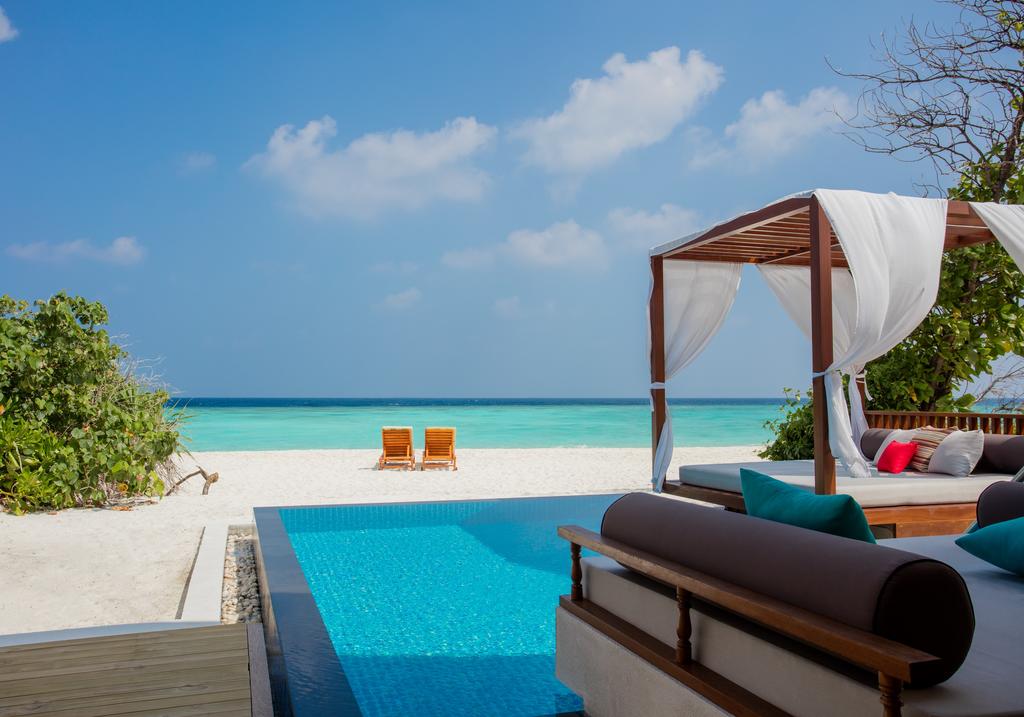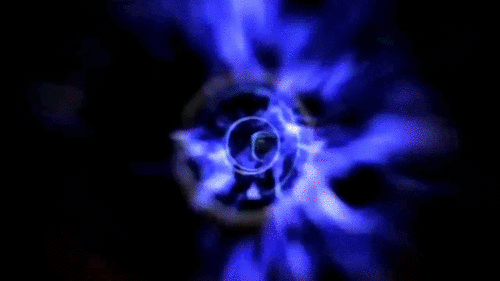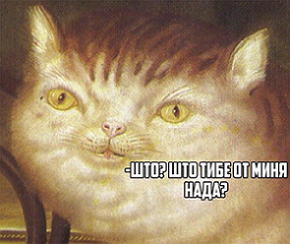Common description
The official name is the Kingdom of Spain.
It is rare that a country can boast such an abundance of colorful, reflecting its essence features.
So what attracts Spain to such a large number of tourists from all over the world?
Spain is a stunning architecture. Spain is the vibrant Seville and medieval Toledo, the original Andalusia and the Islamic pearl of Granada - the Alhambra Palace.
Spain is the birthplace of flamenco and bullfighting.
Spain is the endless coast of the Costa Brava and Costa Dorada, it is the seething, dancing Ibiza and the lagoons of the no less pathos lady - Mallorca!
Spain is the wildlife of the Balearic and Canary Islands. And finally, Spain is a great opportunity to enjoy great skiing on the slopes of Sierra Nevada. Spain keeps in the depths of its memories the images of the great Goya, Velazquez, El Greco and Salvador Dali.
Geographical position:
The total area of 504.8 thousand square kilometers Spain is located in southwestern Europe and occupies most of the Iberian Peninsula. Spain is washed by the Atlantic Ocean in the north and west, as well as the Mediterranean Sea in the south and east. In the north it borders with France and Andorra, in the west with Portugal. Spain owns several groups of islands, the most significant of which are the Balearic Islands in the Mediterranean Sea and the Canary Islands in the Atlantic Ocean.
Spain is the highest country in Europe (after Switzerland), mountains and plateaus make up more than 90% of its territory. The highlands of Meseta (translated from Spanish - table) occupies almost half of the country.
Political structure:
Parliamentary constitutional monarchy. The head of state is the king.
Population:
Spain is recognized as a single nation formed on the basis of various historical areas and ethnic groups, the main of which are Catalans (15.6%), Andalusians (15.6%), Castilians (11.1%), Valencians (9.7%) , Galician (7.4%) and Basques (5.6%).
Tongue:
The official language is Spanish. In some regions - Galician, Basque, local dialects. The Catalan language, which belongs to the Romanesque group and is closely related to the dialects of France, is recognized as the second official language used in the media, almost all business negotiations and paperwork are conducted there.
Religion:
The state religion of Spain is Roman Catholic. About 95% of Spaniards are Catholics.
Sights:
Spain is a country with a long history that has seen the heyday and decline of several powerful states. The influence of various peoples, religions and cultures, the border between Europe and Africa, the isolation of the Mediterranean and the vastness of the Atlantic Ocean - all this is reflected in the magnificent monuments and cultural traditions of Spain. This country is rightly called the "open-air museum." The most "tourist" cities are Madrid with its environs, Barcelona, Valencia, Seville. In Madrid, for example, the Prado Museum, the most famous along with the Louvre Museum, is located, which is a world heritage, the collection of which began to be collected by Charles V, emperor of the Roman Empire.
Kitchen:
One of the best in the world in terms of quality and variety of products is, without a doubt, the cuisine of Spain. One thing that is found everywhere in Spain is olive oil, which is widely used in cooking. Another constant component of Spanish cuisine is seafood, which is prepared in various ways. Even in the central regions of the country, fresh seafood is delivered every morning. Tapa is also common throughout Spain. Tapa is an appetizer that is served hot or cold and with various fillings, among which almost all elements of Spanish cuisine are meat, cheese, eggs, olives, etc.
The most famous dishes in Spain are Pealla (rice dish), Jamon Serrano (Spanish ham), many different sausages and sausages, El Gaspacho (cold vegetable soup) and tortilla omelets.
Greens, goat cheese, tapas, fresh farm bread, olives, fish dishes, cider and wine - all these delicacies can be tasted everywhere in any restaurant by the sea.
And wine in Spain is, first of all, the famous Sangria, light, invigorating. The basis of this Sangria is a variety of fruits and ice that are added to red wine, thereby making it fragrant and less strong, perfect for quenching thirst.
Souvenirs:
Damask jewelry, knives, swords and ceramic products from Toledo, Valencia and Seville, filigree silver from Cordoba, leather bottles for wine - botas, castanets, Spanish dolls and bullfighting posters.
Holidays in Spain:
In Spanish, a holiday is a fiesta. In Spain, every month there are at least a dozen two fiestas. The whole country is dancing in the open air, some are flamenco, some are hot, some are segidilla, and some are round dance. Each city has a patron saint in whose honor holidays are held. The inhabitants of Valencia are famous throughout Spain for the best oranges in the world and the most loud firecrackers and fireworks.
Main holidays and weekends:
December 8 - La Inmaculada Concepcion (Feast of Impeccability)
October 12 - National Fiesta of Spain (Spain Day)
August 15th - La Asuncion (Banquet of Assumption)
May 1 - Fiesta del Trabajo (Workers' Day)
March / April - Viernes Santo (Good Fridays)
January 1 - Ano Nuevo (New Year)
December 25 - Navidad (Christmas)
It is rare that a country can boast such an abundance of colorful, reflecting its essence features.
So what attracts Spain to such a large number of tourists from all over the world?
Spain is a stunning architecture. Spain is the vibrant Seville and medieval Toledo, the original Andalusia and the Islamic pearl of Granada - the Alhambra Palace.
Spain is the birthplace of flamenco and bullfighting.
Spain is the endless coast of the Costa Brava and Costa Dorada, it is the seething, dancing Ibiza and the lagoons of the no less pathos lady - Mallorca!
Spain is the wildlife of the Balearic and Canary Islands. And finally, Spain is a great opportunity to enjoy great skiing on the slopes of Sierra Nevada. Spain keeps in the depths of its memories the images of the great Goya, Velazquez, El Greco and Salvador Dali.
Geographical position:
The total area of 504.8 thousand square kilometers Spain is located in southwestern Europe and occupies most of the Iberian Peninsula. Spain is washed by the Atlantic Ocean in the north and west, as well as the Mediterranean Sea in the south and east. In the north it borders with France and Andorra, in the west with Portugal. Spain owns several groups of islands, the most significant of which are the Balearic Islands in the Mediterranean Sea and the Canary Islands in the Atlantic Ocean.
Spain is the highest country in Europe (after Switzerland), mountains and plateaus make up more than 90% of its territory. The highlands of Meseta (translated from Spanish - table) occupies almost half of the country.
Political structure:
Parliamentary constitutional monarchy. The head of state is the king.
Population:
Spain is recognized as a single nation formed on the basis of various historical areas and ethnic groups, the main of which are Catalans (15.6%), Andalusians (15.6%), Castilians (11.1%), Valencians (9.7%) , Galician (7.4%) and Basques (5.6%).
Tongue:
The official language is Spanish. In some regions - Galician, Basque, local dialects. The Catalan language, which belongs to the Romanesque group and is closely related to the dialects of France, is recognized as the second official language used in the media, almost all business negotiations and paperwork are conducted there.
Religion:
The state religion of Spain is Roman Catholic. About 95% of Spaniards are Catholics.
Sights:
Spain is a country with a long history that has seen the heyday and decline of several powerful states. The influence of various peoples, religions and cultures, the border between Europe and Africa, the isolation of the Mediterranean and the vastness of the Atlantic Ocean - all this is reflected in the magnificent monuments and cultural traditions of Spain. This country is rightly called the "open-air museum." The most "tourist" cities are Madrid with its environs, Barcelona, Valencia, Seville. In Madrid, for example, the Prado Museum, the most famous along with the Louvre Museum, is located, which is a world heritage, the collection of which began to be collected by Charles V, emperor of the Roman Empire.
Kitchen:
One of the best in the world in terms of quality and variety of products is, without a doubt, the cuisine of Spain. One thing that is found everywhere in Spain is olive oil, which is widely used in cooking. Another constant component of Spanish cuisine is seafood, which is prepared in various ways. Even in the central regions of the country, fresh seafood is delivered every morning. Tapa is also common throughout Spain. Tapa is an appetizer that is served hot or cold and with various fillings, among which almost all elements of Spanish cuisine are meat, cheese, eggs, olives, etc.
The most famous dishes in Spain are Pealla (rice dish), Jamon Serrano (Spanish ham), many different sausages and sausages, El Gaspacho (cold vegetable soup) and tortilla omelets.
Greens, goat cheese, tapas, fresh farm bread, olives, fish dishes, cider and wine - all these delicacies can be tasted everywhere in any restaurant by the sea.
And wine in Spain is, first of all, the famous Sangria, light, invigorating. The basis of this Sangria is a variety of fruits and ice that are added to red wine, thereby making it fragrant and less strong, perfect for quenching thirst.
Souvenirs:
Damask jewelry, knives, swords and ceramic products from Toledo, Valencia and Seville, filigree silver from Cordoba, leather bottles for wine - botas, castanets, Spanish dolls and bullfighting posters.
Holidays in Spain:
In Spanish, a holiday is a fiesta. In Spain, every month there are at least a dozen two fiestas. The whole country is dancing in the open air, some are flamenco, some are hot, some are segidilla, and some are round dance. Each city has a patron saint in whose honor holidays are held. The inhabitants of Valencia are famous throughout Spain for the best oranges in the world and the most loud firecrackers and fireworks.
Main holidays and weekends:
December 8 - La Inmaculada Concepcion (Feast of Impeccability)
October 12 - National Fiesta of Spain (Spain Day)
August 15th - La Asuncion (Banquet of Assumption)
May 1 - Fiesta del Trabajo (Workers' Day)
March / April - Viernes Santo (Good Fridays)
January 1 - Ano Nuevo (New Year)
December 25 - Navidad (Christmas)
Сlimate
Spain is one of the warmest countries in Western Europe. The average number of sunny days is 260–285. The average annual temperature on the Mediterranean coast is 20 degrees Celsius. In winter, temperatures drop below zero, usually only in the central and northern regions of the country. In summer, the temperature rises to 40 degrees and above (from the central part to the south coast). On the north coast, the temperature is not so high - about 25 degrees Celsius. Spain is characterized by very deep internal climatic differences, and it can only conditionally be entirely attributed to the Mediterranean climatic region. These differences are manifested both in temperature and in annual totals and precipitation. In the far northwest, the climate is mild and humid with slight temperature fluctuations throughout the year and a lot of rainfall. Constant winds from the Atlantic bring a lot of moisture, mainly in winter, when foggy and cloudy weather with drizzling rains, almost without frost and snow, prevails. The average temperature of the coldest month is the same as in the north-west of France. Summer is hot and humid; average temperature is rarely above 16 degrees Celsius. The annual rainfall exceeds 1070 mm, and in some places reaches 2000 mm. Absolutely different conditions in the interior of the country - on the plateau of Old and New Castile and the Aragonese plain. In these areas, the influence of the plateau-basin relief, a significant height and local continental air affects. They are characterized by a relatively small amount of precipitation (not more than 500 mm per year) and sharp fluctuations in temperature over the seasons. In Old Castile and on the plain of Aragon, there are quite cold winters with frosts and strong, harsh winds; summers are hot and rather dry, although the maximum precipitation falls on this season of the year. In New Castile, the climate is a little milder, with warmer winters, but also with little rainfall. Agriculture in all these areas needs artificial irrigation.
Currency
On January 1, 2002, the Euro was introduced, equal to 100 cents. Banknotes with a face value of 5, 10, 20, 50, 100, 200 and 500 euros are in circulation, as well as coins with a face value of 1, 2, 5, 10, 20 and 50 cents. Money can be exchanged at exchange offices, hotels and travel agencies, but the best rate is traditionally offered at banks changing without a commission, or at a hotel guide. Sometimes they take a commission, but this is always notified by the inscription on the exchange office. With international credit cards, you can get money at any time of the day at ATMs located at almost all bank branches. In most hotels and restaurants, as well as in many shopping centers, credit cards and traveller's checks of the world's leading payment systems are accepted. Some small stores may refuse to pay with a card when buying for less than 3 euros. It is imperative to carry identification documents with you, they are often asked to present when paying with a card.
Banks work from 9.00 to 14.00, on Saturday - from 9.00 to 12.00, Sunday - day off. Banks are open around the clock in the main streets of Madrid.
Banks work from 9.00 to 14.00, on Saturday - from 9.00 to 12.00, Sunday - day off. Banks are open around the clock in the main streets of Madrid.





.gif)




